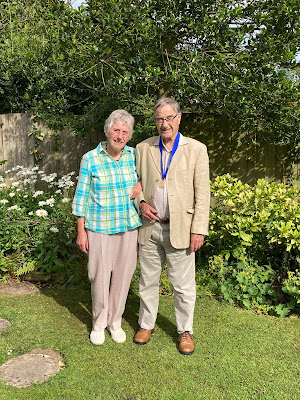.jpg) |
| June Mortazavi (centre) with Felicity
Goodey, President of Cheshire Wildlife Trust (left) and Charlotte Harris CEO of Cheshire Wildlife Trust (right) |
At the Cheshire Wildlife Trust AGM on November 26th Wirral Wildlife volunteer June Mortazavi was presented with the Eric Thurston Award. This is the highest accolade for volunteering given by Cheshire Wildlife Trust. It is given to acknowledge the Trust’s most inspirational and outstanding volunteers. Winners are awarded a limited edition of a Roger Stephens print of peregrines circling above Beeston Castle.
Here is a taste of why June was nominated.
June arrived with a burst of enthusiasm on the Wildlife Trust scene in 2017 and has made an impact across several Cheshire Wildlife Trust areas. At New Ferry Butterfly Park, she rapidly got involved in practical habitat management and also as a warden, an active committee member and helping host courses and open days. Her impact is Wirral-wide, being an active and encouraging part of the Wirral Wildlife biological recording team. June started with little plant knowledge but has developed her confidence in carrying out botanical surveys and this year is in charge of her own survey. June is a real support to some over stretched volunteers e.g. helping Dr Hilary Ash by writing up flora records. June has become very adept at deciphering Hilary’s annotations of plant names in Latin!
She was trusted to help the Wirral Wildlife recording team process data and publish a peer reviewed paper on quadrat survey carry out at Thurstaston common for 39 years. That is a lot of data!
June gets out and fights for nature, for example liaising with neighbours over injured hedgehogs found at the New Ferry Butterfly Park. June is also a stalwart of the Friends of Lowfields Wood, Eastham, which was set up by Cheshire Wildlife Trust's Natural Futures programme in January 2019 and continues to flourish. June works beyond Wirral with CWT staff in the Delamere area.
All this tremendous activity and sustained and growing enthusiasm is on top of a part time job. June has not retired yet and achieves so much for the Trust locally on the Wirral and further afield. June is prepared to both do the spade work in the field and in the digital world with alacrity.
She is a deserving recipient of this Award and we are grateful for her commitment and drive.




